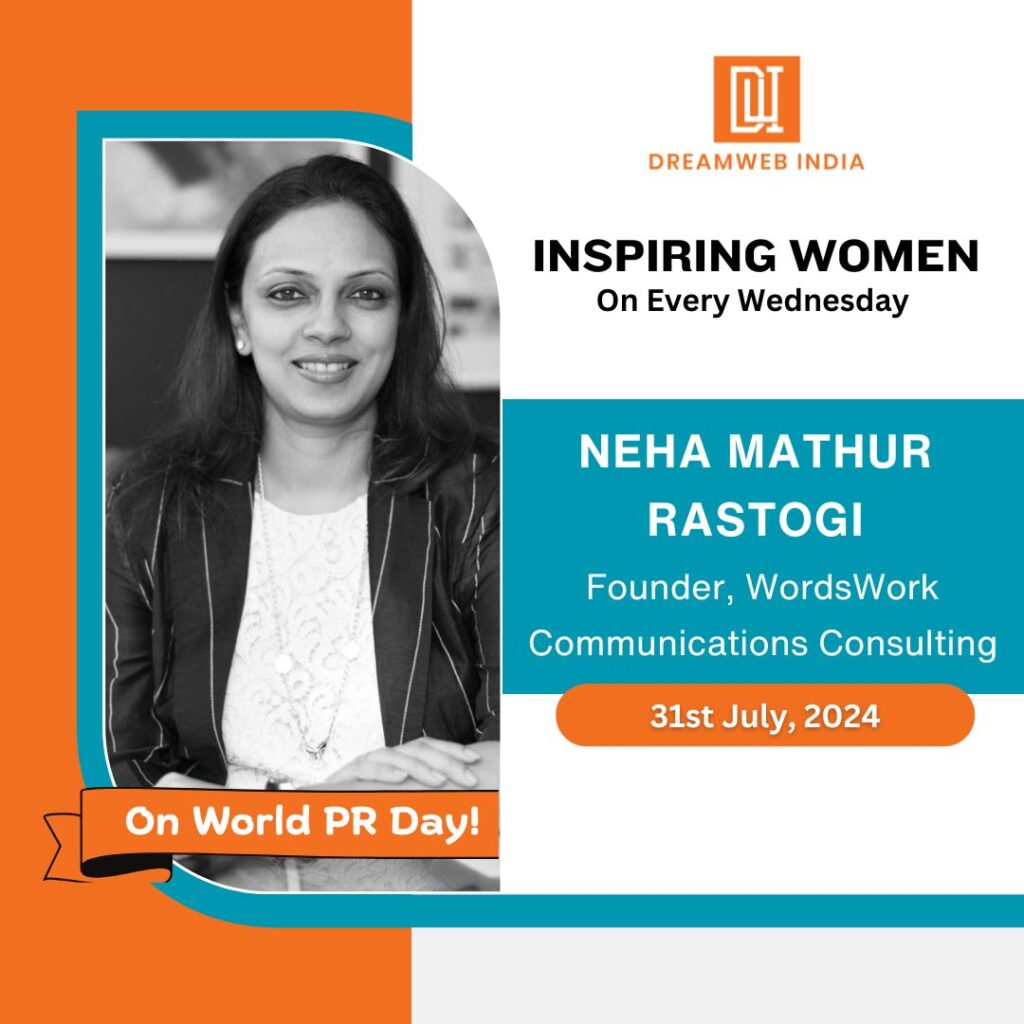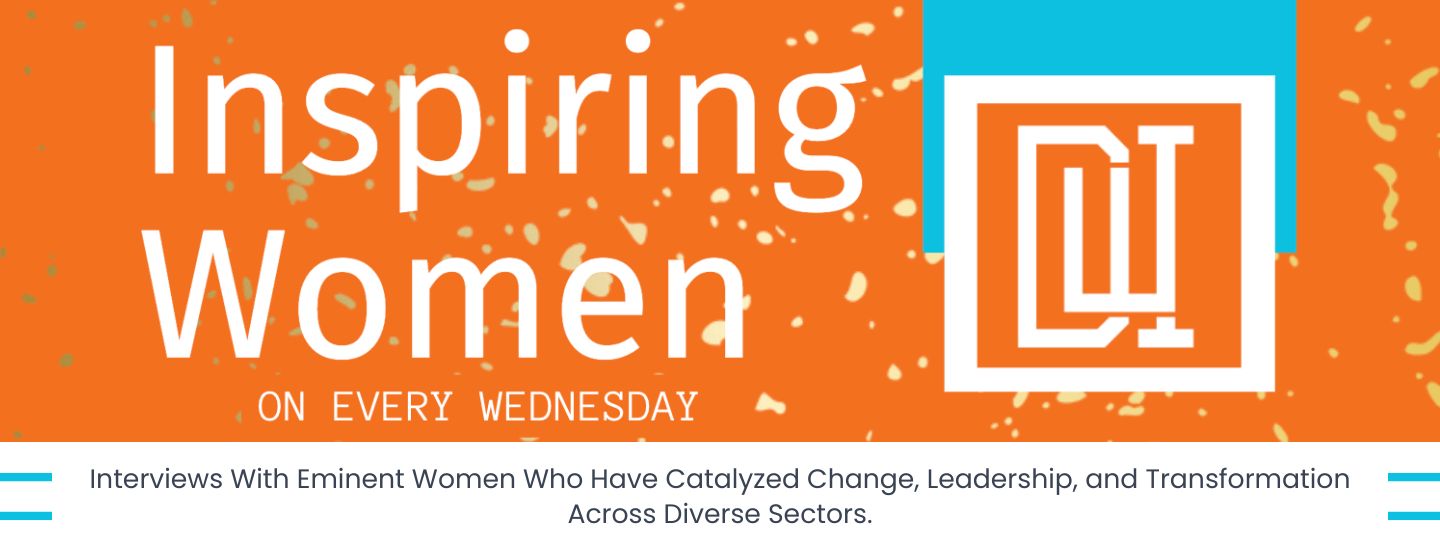
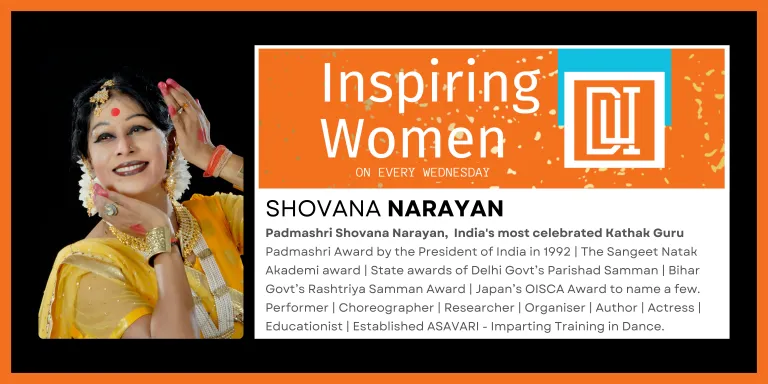
Celebrating 75 Years: Shovana Narayan, India’s most celebrated Kathak Guru
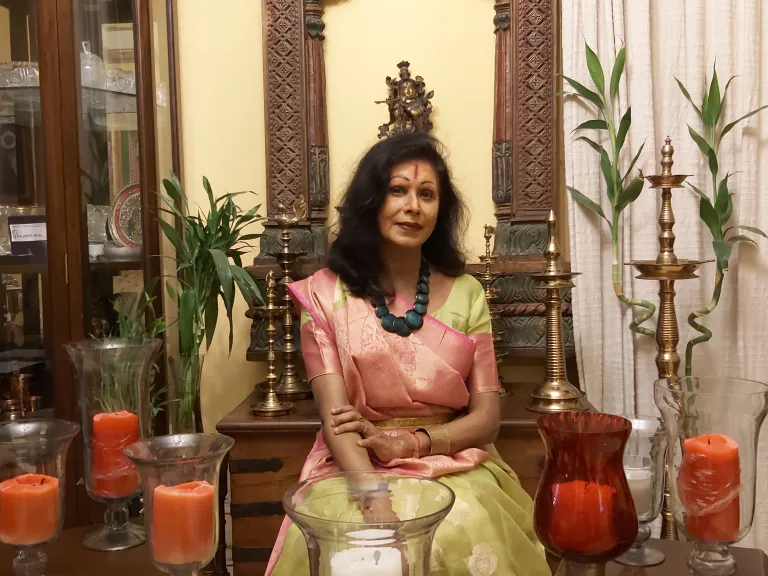
A multifaceted pioneer, Shovana has left an indelible mark as a performer, choreographer, guru, researcher, organizer, and author. Her performances, which blend deep-rooted classicism with innovative artistry, are celebrated for their freshness and social consciousness. Since her debut in 1954, she has mesmerized audiences across the globe at leading national and international festivals. Her shows before Heads of State have been lauded as ‘captivating,’ ‘sheer poetry,’ and ‘sublime joy transcending boundaries.’
Shovana Narayan is renowned for her unique contributions to Kathak and beyond. She seamlessly balanced dual careers as a professional dancer and an Indian Administrative Service (IAAS) officer, achieving excellence in both fields. Her work addresses various social issues, including environmental concerns, women’s rights, and human rights, showcasing her commitment to meaningful causes. She has pioneered contemporary interpretations of classical literature and mythology, engaged in inter-faith and intercultural dialogues, and introduced innovative dance genres. Her service on various academic and cultural committees further underscores her influential role in shaping contemporary Indian art.
Shovana Narayan stands as a paragon of Kathak. Her eclectic taste, bold views, and luminous personality continue to inspire and challenge audiences across generations.
Let’s Get Inspired
In Conversation with Shovana Narayan
– Preeti Juneja
Reminiscing About My Childhood Days: Academics and Dance
I come from a family with a rich cultural heritage, particularly on my mother’s side. Our family embraced all of Saraswati’s arts, including scholastics, performing arts, visual arts, and more— essentially, all sixty-four Kalas. Every child in the family was immersed in these arts and trained accordingly, though the direction they ultimately took depended on their interests. Besides music and the performing arts, my mother’s interests included literature in Sanskrit and Hindi, and I grew up surrounded by the Bhagavad Gita, Mahabharata, and Puranas.
When I was around four years old, brimming with the boundless energy typical of children, I was introduced to the world of dance. My first guru, Guru Sadhna Bose, the renowned dancer and actress of that era, was taken aback when she first saw me. She told my mother in Bengali, “You didn’t bring a child; You brought a baby!”
Besides training in dance, I also attended formal schooling at Loreto Convent, Calcutta. I fully immersed myself in dance, and I loved academics as well. Dance became my aatma – my soul, while the other activities continued to nourish my mind.
Interestingly, I was also introduced to classical music. However, I never took it seriously, and my sister never pursued it in dance. We were given the opportunity to explore various fields, but we both had a strong inclination towards scholastics as well. As a result, we followed two parallel paths – one in the arts and one in academics – and both have continued to shape our lives.
Reminiscing About My Childhood Days: Family and Personal Interests
Women supporting one another to create a strong network for navigating both personal and professional challenges is what interests me.
Through my podcast, Unstoppable Woman, I aim to amplify the voices of strong, determined women from diverse backgrounds, fostering a community of support and inspiration. The podcast serves as a platform for celebrating triumphs, overcoming adversity, and driving positive change.
Through this platform, ‘Unstoppable Woman’, I feel women from all walks of life come together to share stories, learn, and uplift one another.
I don’t come from a family lineage of traditional artists. My grandfather, my Nanaji, was a prominent figure in Indian history, serving imprisonment in 1919 during the freedom struggle and serving in the Central Assembly from 1922-23. Originally from Bihar, he was a great freedom fighter, a prominent lawyer, and a zamindar. Tragically, “not only did he die in 1930, but his two sons also lost their lives in the struggle for independence”. His younger sister was one of the first four female members of the Bihar Assembly in 1937 and notable in her own right.
Given this rich legacy of nationalism, it is no wonder that the Bhagavad Gita was deeply ingrained in our lives, often sung at home, and became a significant part of my upbringing. As a child while I was singing ‘वनिता की ममता न हुई…’ and ‘हिमाद्रि तुंग श्रृंग से प्रबुद्ध शुद्ध भारती’ while also ‘Baba, Black Sheep Have You Any Wool’. My reading varied widely from Jai Shankar Prasad’s modern Hindi literature to Enid Blyton’s children’s books, and later included Shakespeare.
At school, I loved physics, anything related to mathematics, and logic. This interest led me to pursue a PhD in Physics. By then, I had become recognized as a solo professional dancer. At one point, I pursued two careers simultaneously: dance and civil service.Today, my interests range from archaeology and history to anything logical and analytical.
Anecdote I: I was 26 years old when my father died in a train accident in 1977. The next day, I gave the Agni. Later, my sister collected the Asthi and then went to Haridwar to complete all the final rituals. My mother was strong and gave me the courage: ‘This sorrow will not go away, but life will go on.’ I went to Mathura to perform at the festival only a few days after the tragedy.
My parents gave me all the opportunities, with the only condition being, “Whatever you do, don’t do it half-heartedly. Do it well. Do it with depth. Do it with dedication. Do it with honesty and sincerity.”
My Relationship With My Mother
I remember this lesson vividly, as if it had happened just yesterday. I was eight years old then, deeply immersed in my studies, when my mother, a strict disciplinarian, suddenly came in, closed my books, and told me to leave. I was taken aback and scared, wondering what I had done wrong. She told me, “You aren’t studying; your mind is wandering”. I don’t want to hear you say that you have studied for so many hours. Nothing would have gone into your mind if I had asked you something now because I have been watching you.”
“Go on. If you want to dance, then dance. If you want to play, go play. If you want to jump around, do it. But don’t give me any of that drama about how you’re studying.” I was frightened to leave at that time, but I went. When I returned, I studied much more effectively and secured the top position in my class.
This experience indirectly taught me a valuable lesson in time management. It became a habit that has served me well throughout my life. Today, I recognize it as an important lesson: whatever you do, approach it with full concentration, dedication, and honesty.
Anecdote I: During the Chinese aggression in the 1960s, we moved to Patna to build a house in a completely undeveloped area. My mother was deeply involved in social work and managing the construction, often returning late at night with building materials. I would go to bed around 11 or 12, and she would wake me up at 3 in the morning to take over the vigil. She managed the night watch while I took over in the early hours.
From her, I learnt how to live life on my terms without succumbing to negativities and to firmly maintain ethics and dignity while doing my work. I think, what could be a better example?
Anecdote II: In my family, no one had pursued dance professionally before me. While my parents were supportive, some neighbours made disparaging remarks about what people would think. Although my parents were initially taken aback, my mother responded calmly and firmly. She told them, “You are a guest in our home, and we see nothing wrong with our daughter wanting to pursue dance as a career. However, she must uphold her integrity, ethics, and dignity. If she compromises these, then perhaps your concerns might be valid. But if she maintains her integrity, her conduct and behaviour will either add lustre to or diminish the profession.”
On-Stage Solo Performances
In those days, the organizers booked leading artists to give tabla accompaniment to a dancer or musician. I had greats of that time, such as Pandit Kishan Maharaj, Pandit Samta Prasadji, Godai Maharaj, and Ustad Latif Ahmed Khan, providing tabla accompaniment. Those were truly remarkable times, and the experience of performing with such esteemed artists was unforgettable. Although times have changed, but those memories remain special.
Did it make you nervous?
Yes, it did. Because you had to be very ‘pakka‘ (meaning sure) in what you did. There was no guru to guide you. You were alone on stage with the tabla player. So, if you were not ‘pakka‘, you could go astray.

My Longest Dance Performance
The future of content marketing looks bright, primarily due to AI advancements. I utilize AI tools like GPT-4 for efficient content creation and predictive analytics to identify trends and optimize strategies. AI also enables hyper-personalization, tailoring content to engage specific audience segments, while SEO tools help enhance reach by analyzing keywords and user behavior. Overall, integrating AI enriches the quality and effectiveness of our content, making it an exciting time in the field.
When I think that I can’t make it, and if I can, that is success to me.
What does happiness mean to you?
If I can bring a smile to the face of a little child or even an animal or make someone feel calm, I feel gratified, which brings me inner happiness.
Lesson From My Gurus
Guru Sadhna Bose, my first guru, profoundly influenced me during my early years. Even after I moved to Mumbai, her memory remained with me. I vividly recall how she would hold my feet to guide my ‘ta, thei, thei, tat’ movements, and I remember her dance, that was filled with incredible grace and beauty. As a child, I thought she was remarkably tall and elegant.
Later, when my father was posted to Bombay, I was under the guidance of Guru Kundan Lal Sisodia. What a solid foundation he gave me! He taught me with so much love and imparted solid training in footwork of rhythm, and more.
Then, when I came to Delhi, it was Guru Birju Maharaj Ji. At that time, he was still evolving. He became very famous from 1970-71 onwards. I was probably the third or the fourth student of his. Among his early students before me were Pratap Bhaiya and Pradeep Bhaiya. Besides the canvas of rhythmic patterns and abhinaya, he taught us the aesthetics of dance, the aesthetics of movement, the aesthetics of the art, and the aesthetics of the entire dance.
All my gurus equipped me with a lot of skills. In addition, two other gurus gave me valuable lessons in the ethos of dance and life skills.
They were my mother, Lalita Narayan, and Naina Devi, a famous Thumri singer of her time. Both the ladies would say, “dance mein bhaav lao, is movement mein bhaav lao, Sahitya padho“. They urged me to delve into the depths and explore the uncharted terrains of Rasaan Ubhuti.
My only advice for my students is what my mother gave me: Be true to yourself. I tell them I don’t know exactly what you are going through or your inner churnings? Even after having confided in me, there will still be dark areas. You would have told me 90%, but that 10%, which you haven’t shared, matters so much that it can change the situation. So, you need to be true to yourself.
Talking About Diversity
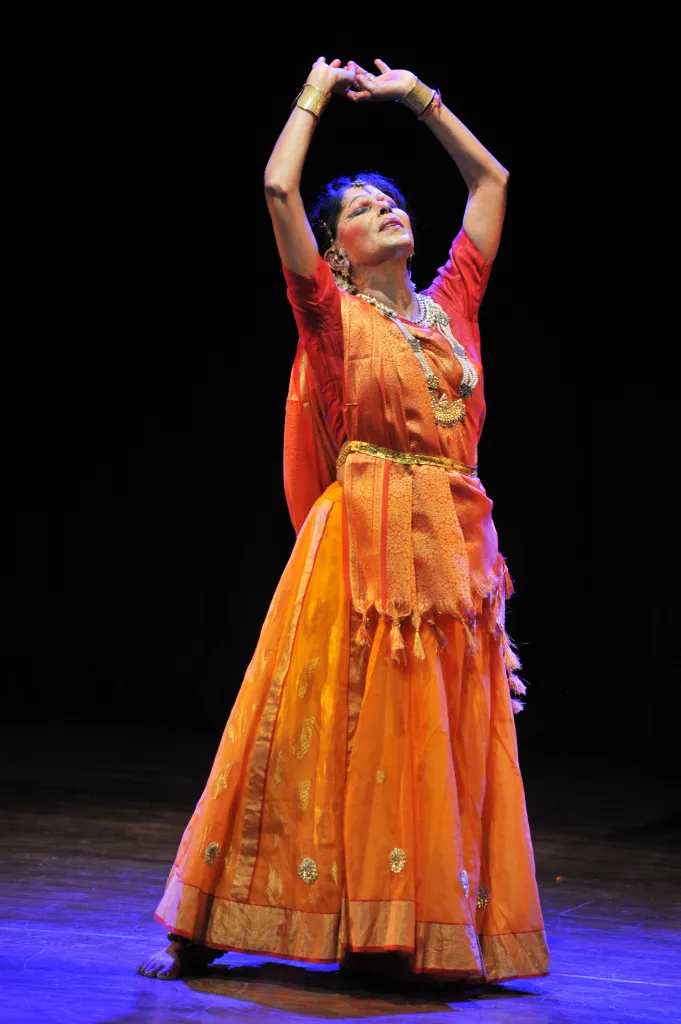
My husband and I come from different cultural and religious backgrounds—he is Catholic, and I am Hindu. But we have never had a clash because our values are alike. We value humanity, honesty, and integrity. The same holds true for friendships. I have friends from different backgrounds, but we are very good friends.
One of the biggest things common to all cultures of the world, including the Indian traditions, are the basic values of honesty, integrity, dedication, and hard work. Whether it’s a path of knowledge, language, music, or philosophy, the core values remain the same. It exemplifies the well-known Sanskrit saying: “Ekam Sat Viprah Bahuda Vadanti” (There is one truth, but the wise call it by different names). It asks us to learn acceptance, to learn to respect. When you learn to respect, you will automatically come to respect everything. You will respect diversity. How beautiful is it? Imagine how boring it would be to have a garden with only one kind of flower.
When you are respecting diversity, you are sensitive. There is Insaniyat (humanity), ‘manushyata’ (humaneness), and ‘Samvedana’ (compassion). I think being a good human being is very important!
Workshops For The Disabled Persons
I have been working a lot with Akshya Pratisthan and Amar Jyoti. I have also been working with cancer patients and individuals with autism and in spastic societies. I have done a couple of workshops for them. I still remember the workshop with a group of spastic children sometime in the 90s. During the ‘Sita Haran’ episode of the Ramayana, the reaction and the answer of a severely spastic boy was telling! He showed respect for Sita, whom he was supposed to abduct! A far cry from what is happening around us!
It brings a question to our mind as to who actually is a “disabled person?” They or us?
In 1994, I wrote an English poem about a “person with disability”:
“We have eyes, but yet we don’t see.
We have ears, but we never hear.
We have a voice, but we never speak.
We can touch, but we never feel.”
My Aspirations
My only aspiration in life, which is also a request, a plea to God – Give me so much strength that I die dancing, that I can serve you till my last dying breath.
I love teaching, I love sharing, I love performing.
About Author

Padmashri Shovana Narayan
Shovana Narayan, a luminary in the world of Kathak, embodies the essence of Indian spirituality and artistic excellence. Her illustrious career has earned her numerous prestigious accolades, including the Padmashri (1992), the Sangeet Natak Akademi Award (2001), and state honors from Delhi and Bihar. Additionally, she holds a Doctor of Literature degree and multiple MPhil degrees, reflecting her profound scholarly and artistic achievements.
04th September 2024
Share this article
Inspiring Women
Share this article
Do you have a question for Padmashri Shovana Narayan ? Write to us at preeti.juneja@dreamwebindia.com



